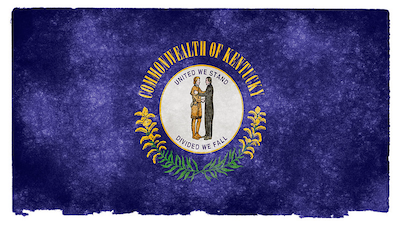Well, the GDP revisions did not take GDP down at all in the manner Danielle DiMartino Booth claimed we’d see in our last two editorials. The US government held its reported Q2 GDP at a healthy Bidenomics 3% in the recently released revisions. In an honest world, I’m sure she would have been right; but in an electioneered wonderworld, a downward revision in GDP is probably as likely as finding a frozen lake in the middle of the Sahara Desert.
Miracle management
The government’s backward revisions to real GDP even managed to revise away the technical recession of 2022, which happened right where I had predicted a recession, by turning one of the two-quarters positive. So, they’ve revised away what had been, at least, technically accurate on my part, leaving me with nothing visible to stand on.
The consumer sentiment report showed us that clearly consumers are not buying it—at least not for the present quarter which has not yet been reported—where more and more consumers are convinced we are already in recession; and those that wouldn’t go quite that far are, none the less, not happy about the economy.
However, with the previous quarters now looking far more positive than the huge recent downward revision in jobs would bear, I don’t suppose there is much chance of the government coming clean on Q3 in a few days either—not with an election in sight.
US gross domestic income (GDI), which almost always prevails over reported GDP whenever the two stray far apart, just got a historically unusual (to say the least) major revision upward in order to stop contradicting real GDP:
US second-quarter economic growth unrevised; GDI revised sharply higher
The revision narrowed the gap between GDP and gross domestic income (GDI), an alternative measure of economic growth. Some economists have argued the gap suggested that GDP was overstating the economy’s health.
They argued that because that is nearly always the way it turns out when GDP is running well above the more accurate GDI. However, the revision took care of the contradiction between the two, clearing away a huge discrepancy that was bordering on saying “recession” for the Biden administration. That is actually more of a hysterical revision than just a historical one. Big changes:
GDI, which measures economic activity from the income side, increased at a 3.4% rate last quarter, revised up from the initially estimated 1.3% pace. It rose at an upwardly revised 3.0% pace in the January-March quarter. GDI was previously reported to have increased at a 1.3% rate in the first quarter….
In principle, GDP and GDI should be equal, but in practice they differ as they are estimated using different and largely independent source data.
GDI has almost never been revised up to match GDP when the discrepancy is large, as this one had been all year until a month before the election. Now the discrepancy has been completely erased. In fact, to make things abundantly clear, Q2 GDI was just revised to be higher than GDP, while the first quarter was revised to be almost twice as high as GDP. So, it really was a miracle government realignment because I don’t think that has ever happened.
Unsurprisingly, the contribution from government spending turned out to be more than expected; but that is just a marginal note.
Color me cynical
You may even be right to do so, and I’m not sure what color cynical is—maybe green as in ready to puke. You’d certainly be right to classify me as a hardcore skeptic on this one.
Says the equally skeptical Zero Hedge:
In short: yes, there were downward revisions, but these were interspersed with a bunch of upward revisions by the BEA, which means that GDP remains quite meaningless as an indicator. And how could it be otherwise, when the Fed just started its most aggressive easing cycle after a quarter in which the US economy allegedly grew 3%?
Indeed, with GDP and GDI being revised way up for most prior quarters and GDP holding solid at 3% in the last reported quarter while GDI now even beat that, it is no wonder the Fed rushed in with an emergency-sized 50-basis-points rate cut! What else could it be expected to do now that GDI has been revised from borderline recession to being even stronger than reportedly “strong” GDP? Bidenomics is clearly an economic miracle that keeps on giving, even if it did need emergency Fed support to keep it going.
The Fed last week sliced half a percentage point off benchmark rates, starting its first easing campaign in four years with an aggressive move despite a pretty stable economy. In addition to this reduction, the central bank indicated through its “dot plot” the equivalent of 50 more basis points of cuts by the end of the year.
Fed Chairman Jerome Powell said the cut was a “recalibration” for the central bank.
Recalibrating for Bubbleland
Perhaps they have decided it is time to create a new super-bubble. Appaloosa Management’s David Tepper said,
The macro setup for U.S. stocks makes him nervous as the Fed eases monetary policy in a relatively solid economy like it did in the 1990s. The supersized rate cut last week came despite most economic indicators looking fairly solid.
“It was around the ’90s in that market where the Fed cut rates into Y2K in a good economy,” he said. That turned into “bubble mania in ’99, early 2000 so I don’t love this. I’m a value guy….”
“I sure as heck won’t be short, because I would be nervous as heck about the setup with easy money everywhere, a relatively good economy,” Tepper said.
Indeed. There is nothing like a sturdy rate cut in a relatively hot economy to quickly blow up an enormous super-bubble. The Fed’s easier money—with more promised cuts to come before the next presidential term begins—will, coincidentally, also help the government finance the equally enormous cost of continuing Bidenomics, should reigning Queen Kamala win her bid to reboot Biden out of the White House. She may become queen for more than a day with this kind of push behind Bidenomics from the Fed and Fed revisers.
It wouldn’t do, after all, to pump out solid economic numbers ahead of the election only to have reality completely crash the party as soon as she’s elected. So, they need those money pumps running again. They will definitely need a super bubble to replace the Everything Bubble, or the queen will be blamed for four years of dire wreckage. Looks like all forces are lining up to make that happen for her.
I have no faith, however, in their ability to maintain the modern miracle mirage for that long. All the plates they are spinning are looking pretty wobbly to me, and I still believe the Everything Bubble is coming down as a problem larger than the manipulators can manage. So, I think it quickly goes to ruin, regardless of how hard they try to maintain the mirage.
China, incidentally, is doing the exact same thing, with Xi announcing that China is going “all out” on stimulating the economy. The only difference is that, in China, the economy is clearly failing due to their Xiro Covid policies, while the US economy is claimed to be “strong.” Both economies are now going “all out” to boost markets and growth, inflation notwithstanding in the US.
This should end well.
Read the full article here




![Best 10mm Carbines [Tested] – Gun Digest Best 10mm Carbines [Tested] – Gun Digest](https://gundigest.com/wp-content/uploads/10mm-carbine-feature-kriss-vector.jpg)







Leave a Reply